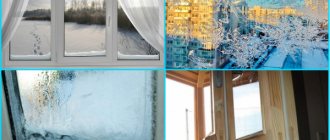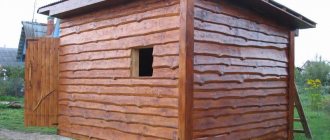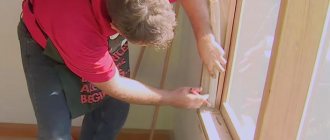When to insulate plastic windows: reasons for heat loss
By purchasing single-chamber and double-chamber plastic windows, homeowners are confident that their home will be reliably insulated from noise, drafts and cold air. However, over time, this confidence can be dispelled by unpleasant realities, and the resulting heat loss will make you think about ways to insulate Euro-windows.
Common reasons that lead to the above problems may be:
- Installation of PVC windows with violations of technology and without compliance with GOSTs. The large number of people who want to replace old wooden frames with new double-glazed windows has become the reason that installation began to be carried out by people who have only a general understanding of it.
- Misalignment of the window frame caused by shrinkage of the house, which is a common occurrence in a new building.
- Physical wear of the rubber seals and the clamping mechanism. Under the influence of weather conditions (cold, heat) during operation, all window components wear out, and this is inevitable.
- Violation of basic operating rules, which include the need to wash the seal and treat it with glycerin to prevent drying out and cracking.
- Poor quality profile. Cheap windows often use cheap plastic parts, which are susceptible to deformation in the heat and can crack in the cold.
If the windows begin to fog up, there is a draft coming out of them, and residents complain about cold glass, then they need additional insulation.
Having found out the reason that led to the violation of thermal insulation, you can already decide whether to look for a specialist for this work or you can do everything yourself.
Where does insulation begin?
Thanks to correctly carried out measures aimed at thermal insulation of double-glazed windows, you will get rid of all the mistakes that were made at the installation stage. If you want, you can even make some design changes to the windows - for example, install a window, replace the sashes that open with blind ones or vice versa, make adjustments to functionality, etc. And where does the thermal insulation procedure itself begin? First of all, from the choice of this or that technology, consumables, from the development of a detailed plan for further work, and in order to do all this correctly, it is necessary to objectively assess the general condition of the window system.
Note! Despite the fact that work on thermal insulation of plastic windows can be carried out at almost any time of the year, it would be correct to do this during the warm period. In addition, there is another important condition - the weather must be dry and windless.
But, by the way, in cold weather it is extremely easy to detect where the cracks are located through which the cold penetrates into the room. Now let’s look at what “weak points” all metal-plastic structures without exception have. Such places include:
- seal of the sash that opens;
- emptiness under the slopes and window sill;
- bead location area;
- the place where the window frame adjoins other structural elements of the entire structure;
- window fittings (all).
In addition, you should definitely pay attention to the width of the window sill. The fact is that it should not cover the heating radiators that are located underneath it. Yes, of course, a wide window sill is extremely convenient, but from a technical point of view it is not entirely correct.
How to check windows for ventilation and tightness
Visually or using tactile sensations, it is quite difficult to determine the place where the tightness is broken.
Thus, in winter, blowing can often be confused with cold glasses (“cold background”), so to determine possible problems it is better to use one of the following methods:
- A lit candle will help you determine from inside the room where the air is blowing from. You need to bring it close to the window and walk around the perimeter. If the flame burns evenly, then everything is in order in this area. The rapid fluctuation of the flame indicates air currents entering the room from the street.
- If you run a damp palm along the contours of the valves, you will feel a sharp chill in the places where the air is blown. It can blow from under the sash or at the junction of the frame and the slope, and cold can also be felt inside the plastic frame.
- You can hold a piece of paper between the closed window sashes and tug it a little. If the paper is easily removed, or the window does not close tightly, then you cannot do without replacing the seal or adjusting the clamping mechanism.
- A piece of chalk will also help you find places where the seal is not pressed tightly. To do this, you need to paint the rubber parts with it, then close and open the window and inspect the frame. If there are places where it is not painted, then the opening is blown through here.
- You can try to press a little on the closed doors; if the noise from the street becomes noticeably quieter, then it is blowing from the doors.
We insulate street slopes of plastic windows
First of all, we pay attention to safety. When work is carried out high, it is better not to save money and call a group of industrial climbers. However, when insulating a window structure inside a loggia, the complex of work is simple. The procedure is as follows:
1. Fill all edge cracks and gaps with construction foam.
2. Cut off any remaining dried aggregate.
3. Carefully treat the slopes with an antibacterial primer.
4. If required, plastering is carried out.
5. Cut tiles from foam plastic that match the size of the slopes.
6. Coat the tiles with mounting adhesive and press them to the surface of the slopes. In order to increase the reliability of the fasteners, dowels can be additionally used.
7. Install perforated corners.
8. Apply glue to the tiles and fix the fiberglass mesh on top.
9. After waiting for the adhesive mixture to dry, you need to coat the surface with glue a second time using a spatula.
10. The process of insulating street slopes is completed by painting them with water-based paint.
Carefully! You can begin painting work only after the mounting adhesive has completely dried!
Reliable insulation of plastic window structures from the outside helps prevent the formation of condensation accumulations. In addition, the room (room) becomes more comfortable and warmer.
When should window insulation be left to professionals?
Before you rush to insulate windows yourself, you should think carefully about whether you need to contact a company specializing in this.
It is advisable to involve a specialist if:
- the plastic window was installed recently, and the installation company’s warranty has not yet expired; its specialists must fix all problems free of charge;
- the window is located at a considerable height (in an apartment in a multi-storey building) - such work is associated with a high level of danger;
- there are manufacturing defects or the insulation needs to be changed - in this case, the master will be able to install components and fittings that will be “like original”;
- The work is carried out in the cold season - a professional will be able to do everything efficiently and quickly, without cooling the room too much.
Since the comfort of living in a room depends on the temperature inside the room, if you have the slightest doubt about your ability to do it yourself so that it does not blow, it is better to contact a company specializing in such work.
Reasons for the need for additional insulation
Violation of tightness is the main factor provoking the need for insulation work.
What causes loss of tightness:
- Errors when installing a window unit;
- Poor quality installation of slopes;
- Worn out insulation;
- Loss of elasticity of the seal;
- Wall shrinkage;
- Malfunction of mechanisms, window fittings.
Violation of tightness is the main factor
Interesting! When installing a plastic window, it requires significant destruction of the window opening. Often, builders resort to unscrupulous insulation measures, filling the impressive holes formed during the construction of a house with literally anything - from construction waste to sand and cement.
Polyurethane foam is also popular for sealing holes in walls.
Polyurethane foam, which has a cellular structure, is also popular for sealing holes in walls; over time, when condensation forms in façade cracks, it peels off from the surface and also dries out under the influence of ultraviolet rays. Therefore, over time, not only window cracks, but also the window sill will require insulation.
How and with what to insulate plastic windows if there is a draft
Once you have identified the problem, you can begin to fix it. Below are the most common reasons for blowing and ways to properly get rid of drafts inside a room.
If there is air between the window sill and the frame
In most cases, this problem can be fixed on your own. The sequence of actions and the necessary materials will depend on the thickness of the cracks and the intensity of drafts.
If there is a small gap (no more than 1-2 mm) from which there is not much blowing, white moisture-resistant silicone sealant will help correct the situation. It must be applied using a special gun so that it falls into the gap.
If the gap is uneven and its thickness ranges from 2 to 5 mm, then sealant alone will not do. To seal such cracks, it is better to use a plastic profile for tiling the inner corners of walls in bathrooms. From it you need to cut off a decorative part with a flat plate (1-1.5 cm wide). The gap must be filled well with sealant and the prepared decorative corner must be inserted into it.
If it starts to blow from the window immediately and very strongly, then you need to check the insulation of the ebb. To do this, it is necessary to remove and inspect the mounting seam between the frame and the doorway. Then blow out all the fistulas, holes and voids with polyurethane foam.
There is no need to try to caulk the cracks with padding polyester, foam rubber or construction waste. Foam is the best choice for these purposes; it can be plastered on top with cement.
Window
105 votes
+
Vote for!
—
Vote against!
It’s probably no secret that during the operation of wooden windows, the wood dries out, which is why gaps and cracks appear in the frames, the gaps between the glass and the glazing beads that hold it widen, and the tightness of the fit of the sashes to the frame decreases. This is felt especially well with the onset of cold weather, when a mournful wind whistles through the cracks of the window. In principle, there are situations when you can put up with this and not even notice. When the house is “heated” so much that you have to open the door to the unglazed balcony so that it doesn’t get too hot in the room, then the presence of cracks in the frames even plays into your hands. But what about those who are not so lucky, whose house is not so “hot” heated, or energy savings play an important role? In this article, we will tell you several of the most common ways to properly insulate windows so that the lion's share of heat does not escape through them.
Content:
- How to insulate old windows
- Insulating windows with newspapers and paper strips
- Insulation of windows with cotton wool and fabric strips
- Insulation of windows with foam rubber and tape
- Seal cracks in windows with paraffin
- Window insulation using Swedish technology
- Insulation of windows with heat-saving film
- Insulation of window openings
- Video: how to insulate windows
First, a tip that is not directly related to windows, but plays an important role in the correct distribution of heat in the room. In all houses, heating radiators are located under the windows. If you cover the radiators with curtains, the hot air rising from them will be safely blown out through the cracks of the windows, without fulfilling its function of heating the room. Therefore, it is important to leave radiators open.
How to insulate old windows
There are countless ways to insulate old wooden windows. Here they come up with “who can do what”, using the simplest means at hand. Among them are temporary measures, the last traces of which are removed with the onset of stable heat during routine cleaning and window washing. But there are also methods that can ensure windows are sealed for several years. Below are just the most popular ones.
Insulating windows with newspapers and paper strips
A very old proven method. Our grandfathers, when insulating windows with their own hands, used only the most accessible and cheap means. To seal the cracks, old newspapers were used, which were soaked in water. The resulting mass was used to fill the space between the glass and the glazing beads and other cracks. Sometimes newspapers were first rolled into tubes, only then moistened in water and pushed into the cracks. On top, all the joints of glass with frames and sashes with the supporting frame were glued with strips of paper. To do this, laundry soap was diluted to a liquid consistency, and the resulting solution was applied to strips of paper. They were then quickly glued into place.
This method is good, but in the spring all this “beauty” must be torn off. And here you may encounter the following problem: the paint will come off along with the paper. In addition, the remains of paper and newspapers are quite difficult to wash and remove without damaging the coating of the frames. That is why another method appeared.
Insulation of windows with cotton wool and fabric strips
Window insulation with cotton wool has replaced newspapers. Technical wool is pushed into all the cracks, and the top is sealed with strips of fabric, soaped, as in the previous method. Air bubbles in cotton wool serve as a heat insulator. At the same time, it can be easily pulled out. And the fabric strips come off the frames without leaving marks or damaging the paint coating.
This method still exists today; one should not be skeptical about it. It is cheap and performs its functions with a bang. Cotton wool is an irreplaceable material. But instead of strips of fabric, it is quite possible to use modern tapes for sealing windows, which are a type of paper tape. Once removed they leave no traces.
Insulation of windows with foam rubber and tape
Foam rubber is good if the task is how to effectively insulate windows that have large gaps in the sash. In other words: the opening doors have become so dry that they do not fit tightly to the frames. Here you won’t get off with just cotton wool. Foam rubber is glued along the perimeter of the sashes, which ensures the tightness of closing the window. By the way, earlier, when there was no foam rubber with an adhesive side on the market, it was nailed to the frame with small nails. Foam rubber can last a couple of years, then it will begin to collapse or deform. The top of the frames is sealed with tape, the same as in the previous method, i.e. paper In the spring, the adhesive tape will have to be removed, but the foam rubber can be left.
Seal cracks in windows with paraffin
Another method that only applies to sealing small cracks in frames. Paraffin is melted, drawn into a syringe and filled into the cracks. If the gaps are too large, you can use a clothesline or other cord. It is pushed into the slot and then filled with paraffin. As you understand, this will be enough for more than one season.
Window insulation using Swedish technology
A very popular and advertised method recently. In fact, this technology was not invented by the Swedes. It got its name “in honor” of the material that is used in it - EuroStrip, it was actually invented in Sweden. And the method itself is called “grooved window sealing technology.”
The main difference between the “Swedish technology” is that it is not even insulation “for the winter”, but a partial reconstruction of windows. After it, the windows can be opened freely in the cold season (they will not be sealed), and the “insulation” will last 15 – 20 years.
Small cracks in frames or between glass and glazing beads are sealed using sealant. Windows must first be washed and dried. And the process of applying the sealant should be carried out at a positive temperature from +5 ° C to +40 ° C.
The nozzle on the sealant cartridge must be carefully cut along the intended line, then put on a special construction gun. With it, you can easily apply the composition to hard-to-reach places, distributing it evenly. If the sealant accidentally gets on the frame or window sill, remove it with a cloth soaked in gasoline. It is more convenient to remove the sealant from the glass after it has dried by simply picking it off with a knife.
To seal the recesses, a special window seal made of silicone rubber with a tubular profile is used. The manufacturers of this sealant assure that it is not afraid of paints, temperature changes and dirt. The diameter and structure of the tubes vary, so the sealant must be selected individually to suit the size of the cracks. The marking of the seal is as follows: “E” (K-profile) - for closing gaps of 2 - 3.5 mm; “P” - for gaps of 3 – 5 mm; “D” – will cover 3 – 7 mm. To determine the size of the gap between the frame, you can clamp a piece of plasticine wrapped in cellophane between the sash and the frame.
The work of installing the seal is actually a partial restoration, which is best left to professionals. Moreover, if the frames are not in the best condition, the geometry of the window is broken, the wood is dry or partially rotten, then repairs can cost a pretty penny. The technology itself is designed for windows that have been carefully looked after and maintained in good condition. Otherwise, insulation using Swedish technology can cost as much as new double-glazed plastic windows cost.
To begin with, all sashes are removed from their hinges.
Then a groove is selected along the perimeter of the frame using a cutter.
A seal is rolled into it and glued so that it does not move or fall out during operation. Then the sashes are hung back on their hinges. At the same time, we repeat, if the window is old, you may need to replace the fittings or even align the window geometry.
With proper care, the seal can last from 10 to 20 years. And during this time, you can save up money for new windows, you can also have wooden ones, only modern ones - with double-glazed windows.
Insulation of windows with heat-saving film
A relative innovation is the use of heat-saving films. They let light into the room, but do not “release” infrared radiation from it, thus retaining heat. Such a film has two sides, one with a metallic sheen and conducts current, the other does not. When gluing the film to glass, you must make sure that it “looks” at the street with the metal side - that’s the whole point.
It should be glued overlapping onto the frames and secured with tape. If you stick it carefully, its presence will not even be visible.
Heat-saving film can also be glued to plastic windows.
Insulation of window openings
One of the most important points. Otherwise, the windows can be sealed, but a half-length gap between the frame and the slope or window sill, as our builders like to leave, may not be noticed.
The most common way to seal gaps between the frame and the window opening is to blow it with foam. It’s both effective and a little hassle. Only after it dries, it will be necessary to cut off the excess and somehow seal up this “beauty.”
To seal cracks, you can use putty that you prepare yourself. You need to take building plaster and chalk and mix them 2:1, adding water. Use the resulting putty to seal all the cracks. Its color will not stand out against the background of the window as much as polyurethane foam.
All the methods described above are designed for insulating wooden windows. It's hard to believe, but they say that sometimes plastic windows also require insulation. Most likely, such a need arises as a result of their improper operation or “careless” installation. The reason may also be the poor quality of the windows themselves. If the seal fails, it simply needs to be replaced with a new one. If the problem is more serious, for example, a change in window geometry, sagging sashes or poor functioning of the fittings, you should contact professionals and have them repaired.
Video: how to insulate windows
If it blows around the perimeter of the sash
The reason for the swelling may be that:
- windows are not set to winter mode;
- the rubber seal has become unusable;
- The clamping mechanism has become loose.
To prepare the window for low temperatures, you need to adjust the lower and upper hinges, and also move the locking pin to the desired position.
Step-by-step instructions for replacing the seal if it is unusable will be as follows:
- Remove the window sash so that the design features do not restrict access.
- Remove the old seal on the frame and sash and replace it with new contours.
- Be sure to glue the rubber bands together at the joints so that gaps do not form later. Avoid the formation of “accordions” and overlaps.
The clamping force can be adjusted on the upper and lower hinges using a No. 4 hex wrench. If you rotate the hex clockwise, the sash will be pressed against the hinge, and counterclockwise, vice versa. A video on the Internet will tell you how to do this correctly.
If it blows along the edges of the slopes
The main reason for such a draft is a damaged assembly seam. Even with the best-quality installation, this can happen after 5-10 years. To fix this problem, you need to disassemble the slopes, then apply foam along the seam and reinstall the slopes.
You can additionally insulate the slopes inside:
- polystyrene foam - this is the most affordable material that even a beginner can work with;
- foamed polyester - it is resistant to moisture and can provide additional heat and sound insulation, but care must be taken to seal the joints in the slopes;
- mineral wool - for plugging seams, it is not inferior in quality to previous materials, but you need to work with it in a respirator so that its particles do not irritate the mucous membranes, getting into the eyes and respiratory tract.
It is important not only to insulate slopes from the inside, but also from the outside. This will help protect the polyurethane foam from drying out, the doorway from fungus, and also make the temperature in the house warmer.
We are engaged in insulation of slopes
As you know, in metal-plastic windows the slopes must be plastic. The lining must be plastic, and it must be hard. What causes this? The fact is that this material is ideal for additional thermal insulation.
And here the opening formed between the window frame and the wall surface must be blown out using polyurethane foam. Of course, there are other options - for example, insulating boards (they are made from basalt fiber) or foam insulation. Therefore, you can choose the material that is ideal for your current purposes.
The wall must be insulated both from the inside and outside. But in this case, the materials used will not only insulate, but also protect. The insulator itself is necessary for protection from various external negative factors.
Insulating windows for the winter with your own hands
It is not always possible to carry out complex insulation work with the involvement of specialists. In this case, simple methods will help to quickly and briefly eliminate the causes of drafts at home, postponing the work for a while.
In a wooden house, plastic windows from which it blows can be insulated from the outside by simply covering them with cellophane. To do this, it is better to use film in several folds, and its cut should be slightly larger than the area of the window with slopes. You can cheaply and securely fasten cellophane using thin wooden glazing beads or slats and nails.
Another way to make your home warmer is to sew new curtains or make winter blinds. To sew warm curtains, you need to use thick fabrics that will not allow the cold to pass through. It is acceptable to use 2-3 fold fabric or lined curtains. Winter blinds can be made from ordinary ones by simply wrapping them with woolen fabric.
You can deal with drafts using the same method used for wooden frames - seal all joints and cracks. It is not necessary to use strips of paper and soap solution for this. Painting tape will provide more reliable adhesion.
It is important to remember that all of the methods listed do not fundamentally solve the problem, but only give a little time to wait for favorable conditions.
What other insulation options are there?
It is worth noting that there are other ways to protect your home from the cold. Let's take a look at some of them.
Method No. 1. Wool blinds
A non-standard method of thermal insulation of a window structure, but quite effective. Ordinary blinds must be wrapped with strips of woolen fabric, which will prevent the cold from entering the room.
Method No. 2. Window sill insulation
Cold air can also penetrate through the joints between the elements of the window sill. Therefore, these joints should be carefully sealed. In addition, in case of improper installation, “black holes” may appear under the window sill itself, which means that the element must be dismantled, and the gaps between the block and the slab must be carefully processed.
For this purpose, the plugs are opened, the window sill is unscrewed with a screwdriver, and there you will find all the cracks (if any) that allow cold air to pass through.
Method number 3. Application of heat-saving film
A double-glazed window can also be thermally insulated using heat-saving film - a cheap but at the same time effective material. It must be glued in such a way that no air bubbles remain under it, since not only the aesthetic indicators of the entire structure, but also the thermal insulation properties will depend on this.
And if you decide to use such a film, then it is better to take care of gluing it before you begin installing the double-glazed windows themselves. Although, in principle, this can be done after installation is completed.
Video - Gluing heat-saving film
Method number 4. Curtains
This may sound ridiculous, but curtains can be another way to insulate double-glazed windows. These elements act as a barrier to air, which means it does not let it through in winter (if it does penetrate through the window structures). Moreover, the air passing through the curtains even warms up a little.
Video - Preparing plastic windows for winter
Insulation for plastic windows
Relatively recently, new insulation for plastic windows has appeared - energy-saving film and built-in window heating.
Energy-saving film on glass
Energy-saving film is a very thin transparent material with a layer of rare earth elements applied to it. It is practically invisible on the windows and does not affect the level of illumination. The film can reduce overall heat loss through windows by 30%.
When choosing it, you first need to find out the coefficients of light transmission and heat reflection, and the wavelength range. Another important point: the heat-saving film does not allow UV radiation inside, which is necessary for the life of plants, so green friends will need to organize additional lighting.
Based on the installation method, a distinction is made between shrink film and that which is applied wet. To glue heat shrink material, you must perform the following steps:
- Prepare the window by washing and degreasing the glass.
- Apply double-sided tape to the edges of the sash or frame.
- Attach the film to the adhesive tape without pulling too much.
- Heat the surface with a hairdryer so that the film shrinks and stretches, forming a flat surface.
With the wet method, the glass is also first washed with window cleaner and degreased with alcohol or gasoline. Then the film is cut, leaving no reserves. Moisten the surface of the glass with a soap solution (colorless shampoo or other detergent will do). A piece of film begins to be glued on top and smoothed from the center to the edges.
You can also insulate balcony doors using shrink film.
How and how to insulate the internal slopes of plastic windows
In some cases, after removing old, unnecessary windows, the edges of the internal slope look like razor shards. It is not surprising that in such cracks regular drafts expel all the precious (home) heat to the street. In addition, unflattering pieces of polyurethane foam also do not provide aesthetics.
The insulation process in such situations includes the following steps:
1. Cut off all the pieces of old polyurethane foam.
2. A primer mixture should be applied to the slope. It must have an antibacterial effect to prevent the growth of mold fungi and the settlement of harmful microbes.
3. Mix the thick plaster composition.
4. We clean all surface irregularities and reapply the primer;
5. Cut out slabs of suitable dimensions from polystyrene foam.
6. We make scratches on the foam blocks, lubricate these surfaces with glue and glue the material to the surfaces of the slopes.
7. After the adhesive has dried, install the perforated corners and putty their surface.
8. Attach the decorative trim.
Any finishing coating can be used, the most varied. Popular options include painting and plastering. The current trend is plasterboard.
Scotch tape, cotton wool and foam rubber
Paper or masking tape is an old, proven and fastest option to eliminate drafts from plastic or wooden windows. It does not provide significant insulation, but the work is carried out quickly and the materials are cheap. Be prepared that in a strong draft such tape may come off.
If the apartment blows too much, use additional cotton wool or foam rubber. Seal large gaps between the sashes, between the sashes and the wall, or window sill with the material. The cotton wool or foam rubber is sealed on top using masking tape or special paper tape.
You can buy ready-made self-adhesive foam strips. This is an economical option to seal cracks on both wooden and plastic windows. Due to the adhesive base, you do not have to seal the material with tape, and the insulation will easily last throughout the season.
In this case, there is no need to work with water and liquids, which increases the convenience and practicality of the procedure. But sheathing with cotton wool or foam rubber and tape must be repeated before each cold season, since such products absorb moisture well, swell and no longer protect against drafts. In addition, a sealed window cannot be opened for ventilation.
Other window sealing products
The sealant will be a real salvation if there is strong wind from the windows. The sealant is applied to the areas where the glass meets the frame. Window frames must be washed, degreased, and then carefully applied. To make the seam as airtight and aesthetically pleasing as possible, squeeze out the compound with even pressure and distribution; Paraffin is used to insulate wooden frames. The product only eliminates blowing through the pores of the wood. For the procedure, melt the paraffin and glue the surface of the valves with the mixture. This is a budget but labor-intensive method. In addition, it does not eliminate drafts around the perimeter of the glass and frame; Thermal-saving film is a popular and affordable material for covering windows. It not only covers the areas where the glass and frame meet, but also reflects the resulting heat. This increases the thermal insulation of the room and reduces heat loss by 75%
It is important to glue the material correctly, without folds or air bubbles. You can easily apply the film yourself, but it is quite expensive; Oddly enough, washing the window glass and thick long curtains will help to insulate the windows
Clean double-glazed windows allow sunlight to pass through as efficiently as possible, which will heat the room. And thick and long curtains will retain heat inside the room; Electric heating of windows and double-glazed windows is another modern and expensive way to reduce heat loss. In the first case, a heating cable is installed around the window. In addition, you can install ready-made double-glazed windows with heated glass, which will be heated from the inside.











